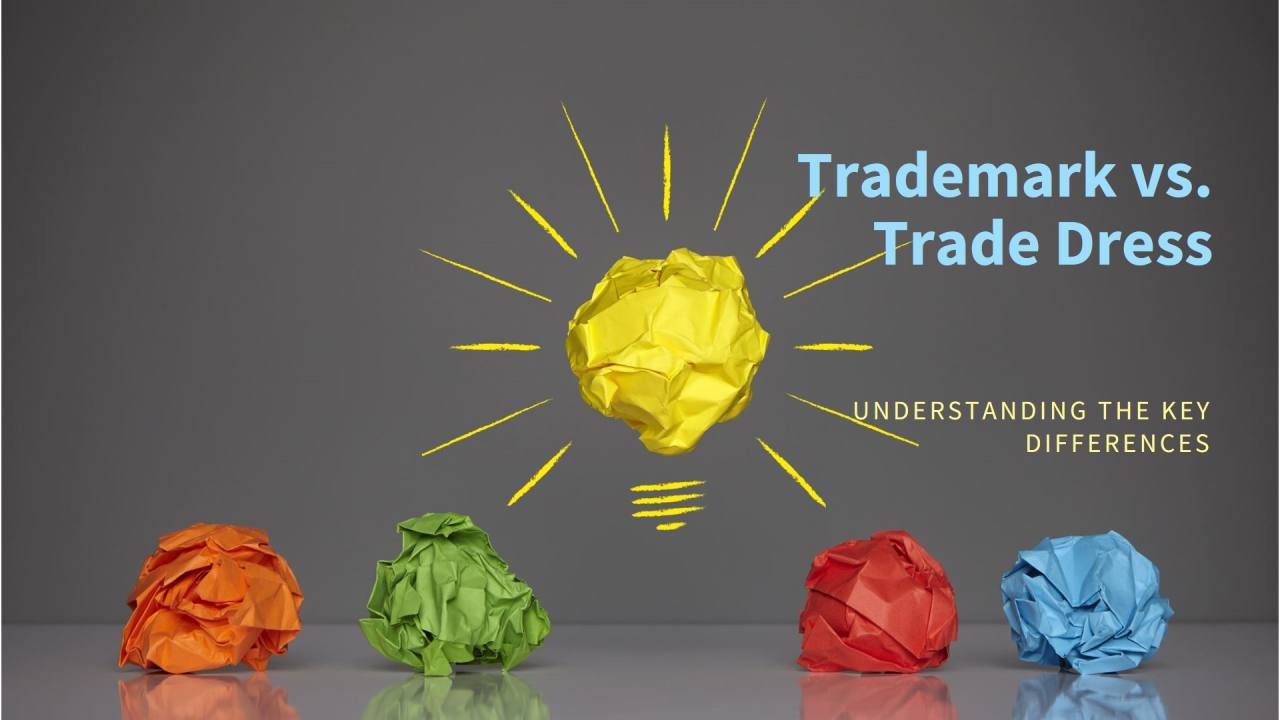
What is a Trademark?
A trademark is any word, phrase, symbol, or design, or a combination of these, that identifies and distinguishes the source of goods or services of one party from those of others. In essence, it’s a brand's signature that consumers recognize, ensuring they can differentiate between competing products in the market.
Examples of trademarks include:
- The Nike swoosh logo
- The word Coca-Cola
- The phrase Just Do It
Trademarks protect the brand name or logo that businesses use to promote their products and services. Registration of a trademark is typically done through national or international IP offices, giving the holder exclusive rights to use the mark in commerce.
What is Trade Dress?
Trade dress refers to the visual appearance of a product or its packaging that signifies the source of the product to consumers. Unlike trademarks, which are usually specific symbols or words, trade dress can encompass the overall look and feel, including shapes, colors, designs, textures, and even layouts.
To qualify for protection, trade dress must:
- Be distinctive and capable of identifying the source of a product.
- Not be functional in nature, meaning it cannot be a design element essential to the use or purpose of the product.
Examples of trade dress include:
- The shape of a Coca-Cola bottle
- The unique layout of an Apple store
- The red soles of Christian Louboutin shoes
In essence, trade dress covers the non-functional, aesthetic elements that consumers associate with a brand.
Key Differences Between Trademark and Trade Dress
Scope of Protection:
- A trademark protects symbols, names, logos, and slogans used to identify a business or product.
- Trade dress protects the visual appearance or design of a product or its packaging, so long as it signifies the product's origin.
Functionality:
- A trademark is not concerned with the functionality of the product but focuses on branding.
- Trade dress cannot be functional; it must serve purely aesthetic purposes. If a design element is necessary for the product’s utility, it cannot be protected as trade dress.
Examples:
- Trademark: The Starbucks mermaid logo.
- Trade Dress: The signature green and white color scheme of Starbucks stores, along with their store layout and design.
Why Does the Distinction Matter?
Understanding the difference is crucial for businesses to choose the correct form of protection. Misunderstanding these concepts can lead to inadequate protection of IP, leaving a company vulnerable to infringement. Additionally, pursuing the wrong type of protection can lead to legal disputes, wasted resources, and potential loss of branding elements.
For businesses, protecting not just the logo or name but the overall look and feel of the product’s presentation can create a competitive edge. Knowing when to apply for trademark versus trade dress protection allows for a more comprehensive approach to safeguarding brand identity.
Conclusion
While both trademarks and trade dress are essential components of IP law, they protect different aspects of a business’s identity. Trademarks cover the logos, names, and symbols that distinguish products, while trade dress secures the visual appearance and packaging that conveys a brand’s identity. By understanding the differences, businesses can better protect their unique market presence and ensure long-term brand recognition.


